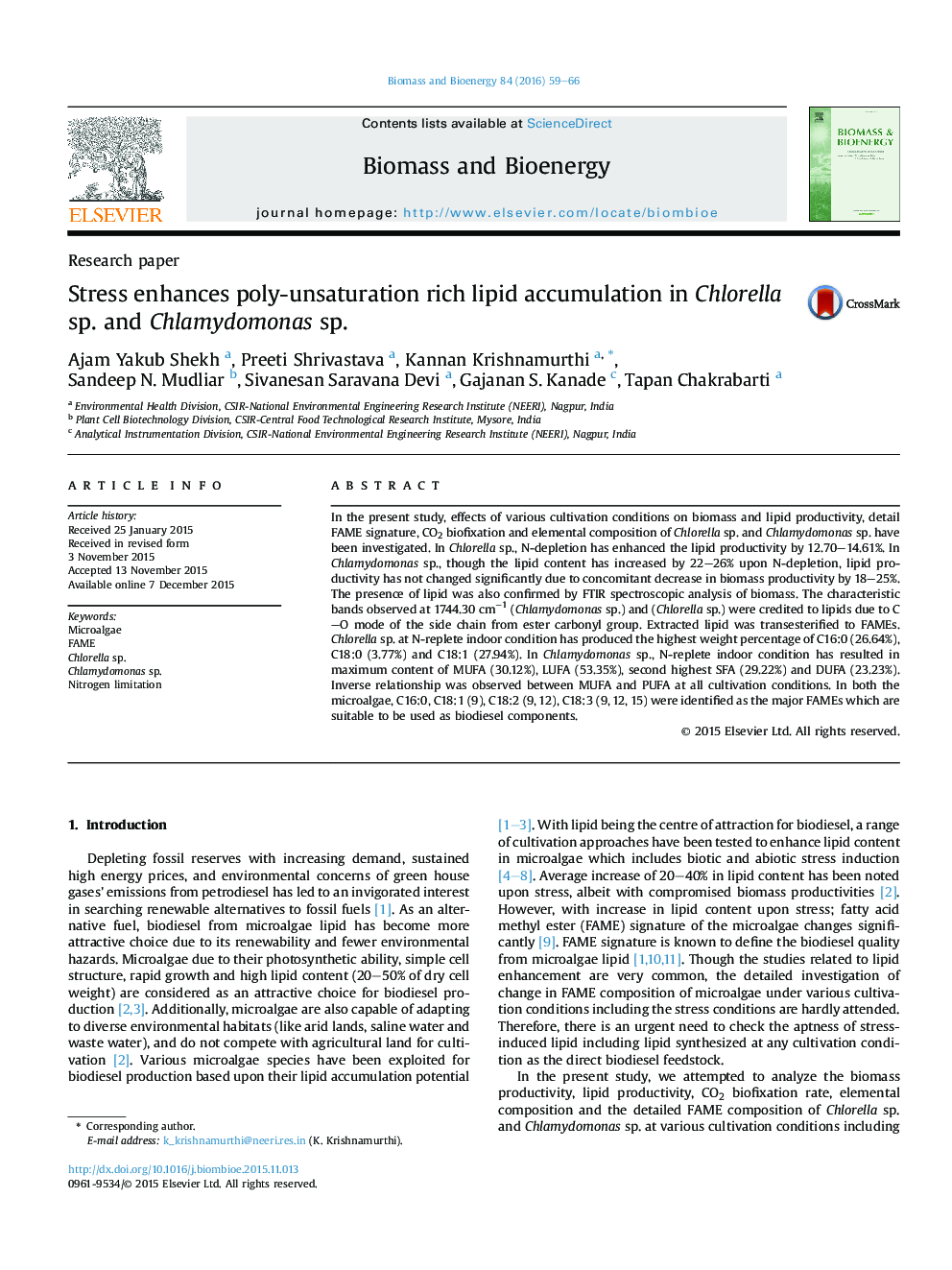| Article ID | Journal | Published Year | Pages | File Type |
|---|---|---|---|---|
| 676722 | Biomass and Bioenergy | 2016 | 8 Pages |
•Best cultivation condition- Indoor (+N) > Indoor (N/2) > Outdoor (+N) > Outdoor (N/2).•Highest lipids were produced at N-depleted outdoor stress condition.•C16:0, C18:1 (9), C18:2 (9, 12), C18:3 (9, 12, 15) were identified as major FAMEs.•Stress-induced lipids were rich in PUFA content.
In the present study, effects of various cultivation conditions on biomass and lipid productivity, detail FAME signature, CO2 biofixation and elemental composition of Chlorella sp. and Chlamydomonas sp. have been investigated. In Chlorella sp., N-depletion has enhanced the lipid productivity by 12.70–14.61%. In Chlamydomonas sp., though the lipid content has increased by 22–26% upon N-depletion, lipid productivity has not changed significantly due to concomitant decrease in biomass productivity by 18–25%. The presence of lipid was also confirmed by FTIR spectroscopic analysis of biomass. The characteristic bands observed at 1744.30 cm−1 (Chlamydomonas sp.) and (Chlorella sp.) were credited to lipids due to C–O mode of the side chain from ester carbonyl group. Extracted lipid was transesterified to FAMEs. Chlorella sp. at N-replete indoor condition has produced the highest weight percentage of C16:0 (26.64%), C18:0 (3.77%) and C18:1 (27.94%). In Chlamydomonas sp., N-replete indoor condition has resulted in maximum content of MUFA (30.12%), LUFA (53.35%), second highest SFA (29.22%) and DUFA (23.23%). Inverse relationship was observed between MUFA and PUFA at all cultivation conditions. In both the microalgae, C16:0, C18:1 (9), C18:2 (9, 12), C18:3 (9, 12, 15) were identified as the major FAMEs which are suitable to be used as biodiesel components.
